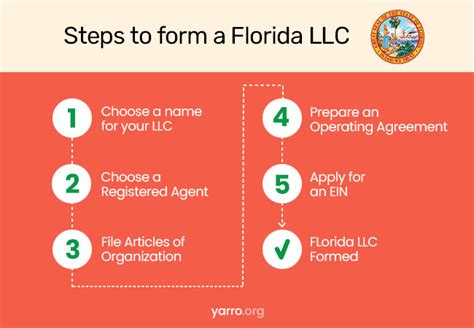How to Form an LLC: A Step-by-Step Guide
Forming a Limited Liability Company (LLC) can provide significant legal and financial protection for your business. This guide breaks down the process into manageable steps, helping you navigate the complexities of LLC formation. We'll cover everything from choosing a name to filing the necessary paperwork.
Step 1: Choose a Name for Your LLC
Selecting the right name is crucial. Your LLC name must comply with your state's regulations. Generally, this involves:
- Availability: Check if the name is already in use with the state's business registry and the Secretary of State's office. Many states offer online name availability searches.
- Suffix: Your LLC name must include a designator that clearly identifies it as a limited liability company. Common designators include "LLC," "L.L.C.," or "Ltd. Co."
- Compliance: Ensure the name doesn't infringe on existing trademarks or copyrights. A trademark search can help prevent future legal issues.
Pro Tip: Brainstorm several names to increase your chances of finding one that's both available and memorable.
Step 2: Appoint a Registered Agent
A registered agent is an individual or business designated to receive legal and official documents on behalf of your LLC. This person or entity must have a physical address within the state where your LLC is formed.
- Responsibilities: The registered agent is responsible for accepting service of process (legal documents), tax notices, and other official correspondence.
- Requirements: State requirements for registered agents vary, so check your state's regulations for specifics. You can either appoint yourself or hire a registered agent service.
Step 3: File the Articles of Organization
This is the formal document that creates your LLC. The Articles of Organization typically include:
- LLC Name: The name you've chosen and verified as available.
- Registered Agent: The name and address of your appointed registered agent.
- Principal Place of Business: The street address of your LLC's main business location.
- Members' Names and Addresses: Information about the individuals or entities owning the LLC.
- Management Structure: Whether the LLC will be member-managed or manager-managed.
Step 4: Create an Operating Agreement
While not always legally required, an operating agreement is highly recommended. This internal document outlines the rules and regulations governing the LLC's operations. It should address key issues such as:
- Membership Interests: Specifies the percentage ownership of each member.
- Management and Control: Details how the LLC will be managed (member-managed or manager-managed).
- Profit and Loss Distribution: Outlines how profits and losses will be shared among members.
- Member Contributions and Withdrawals: Clarifies how members contribute capital and withdraw funds.
- Dispute Resolution: Sets a process for resolving conflicts among members.
Pro Tip: A well-drafted operating agreement protects against future disputes and provides clarity on the LLC's internal workings.
Step 5: Obtain an Employer Identification Number (EIN) (if needed)
If your LLC has employees, or if it operates as a corporation or partnership, you'll need an EIN from the IRS. This is a unique tax identification number used for tax purposes. You can apply for an EIN online through the IRS website.
Step 6: Secure Necessary Licenses and Permits
Depending on your industry and location, you may need additional licenses and permits to operate legally. Check with your local and state government agencies to determine what is required.
Step 7: Open a Business Bank Account
Separating your personal and business finances is crucial for protecting your personal assets. Open a business bank account to maintain clear financial records and enhance the legal protection afforded by the LLC structure.
Conclusion: Launching Your LLC Successfully
Following these steps will guide you through the process of forming an LLC. Remember to consult with legal and financial professionals for personalized advice tailored to your specific situation. Thorough planning and adherence to regulations are key to establishing a successful and legally sound LLC.
